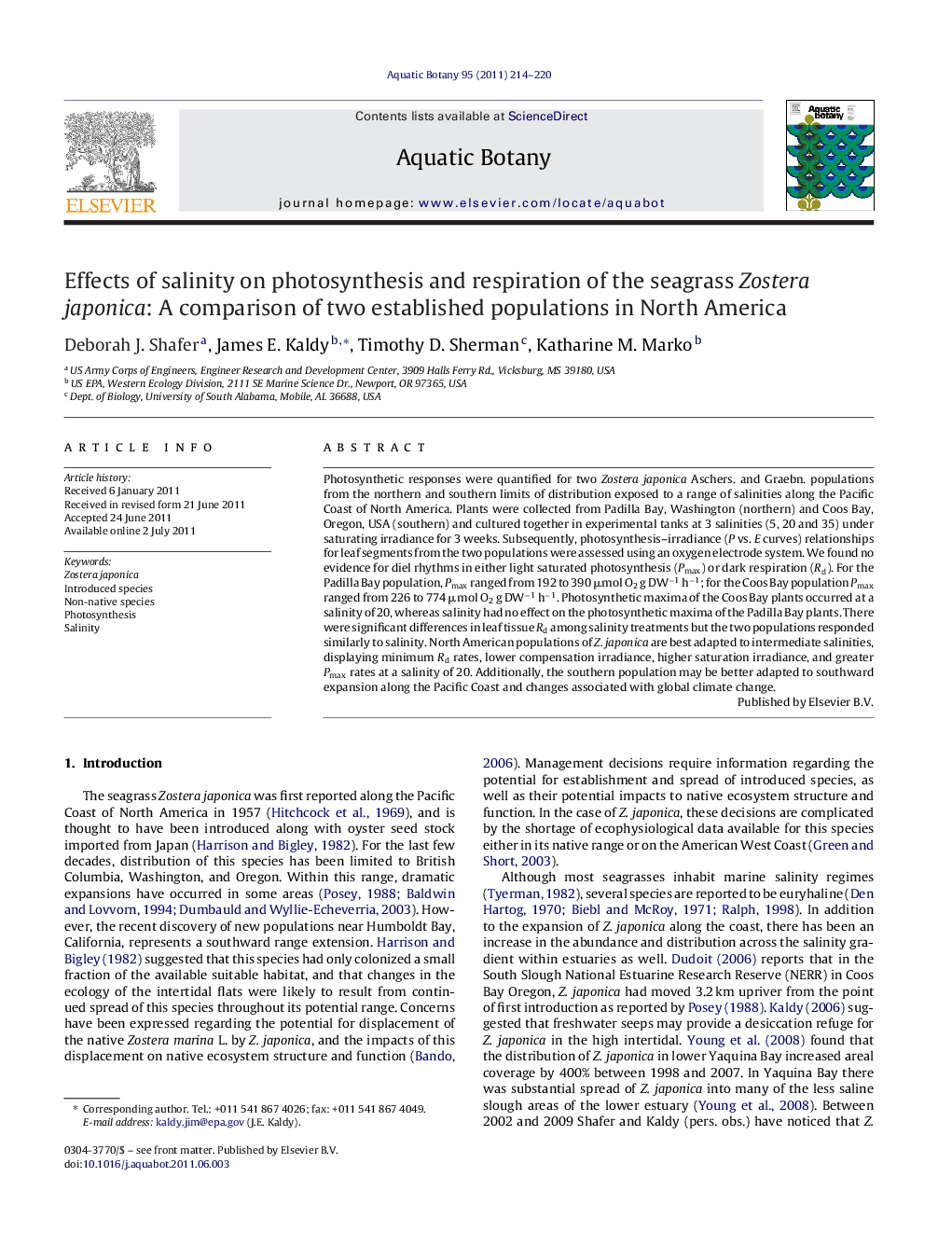| کد مقاله | کد نشریه | سال انتشار | مقاله انگلیسی | نسخه تمام متن |
|---|---|---|---|---|
| 4528103 | 1324283 | 2011 | 7 صفحه PDF | دانلود رایگان |

Photosynthetic responses were quantified for two Zostera japonica Aschers. and Graebn. populations from the northern and southern limits of distribution exposed to a range of salinities along the Pacific Coast of North America. Plants were collected from Padilla Bay, Washington (northern) and Coos Bay, Oregon, USA (southern) and cultured together in experimental tanks at 3 salinities (5, 20 and 35) under saturating irradiance for 3 weeks. Subsequently, photosynthesis–irradiance (P vs. E curves) relationships for leaf segments from the two populations were assessed using an oxygen electrode system. We found no evidence for diel rhythms in either light saturated photosynthesis (Pmax) or dark respiration (Rd). For the Padilla Bay population, Pmax ranged from 192 to 390 μmol O2 g DW−1 h−1; for the Coos Bay population Pmax ranged from 226 to 774 μmol O2 g DW−1 h−1. Photosynthetic maxima of the Coos Bay plants occurred at a salinity of 20, whereas salinity had no effect on the photosynthetic maxima of the Padilla Bay plants. There were significant differences in leaf tissue Rd among salinity treatments but the two populations responded similarly to salinity. North American populations of Z. japonica are best adapted to intermediate salinities, displaying minimum Rd rates, lower compensation irradiance, higher saturation irradiance, and greater Pmax rates at a salinity of 20. Additionally, the southern population may be better adapted to southward expansion along the Pacific Coast and changes associated with global climate change.
► North American populations of Z. japonica are euryhaline and best adapted to salinity 20.
► Plants exhibited no evidence of diel rhythms for Pmax or Rd.
► Z. japonica from Coos Bay, OR had higher Pmax rates than plants from Padilla Bay, WA.
► At salinity of 20 plants exhibit minimum Rd, lower Ic, higher Ik, and greater Pmax.
► Some populations may possess greater ‘fitness’ and may continue to expand along the Pacific Coast.
Journal: Aquatic Botany - Volume 95, Issue 3, October 2011, Pages 214–220